Your project demands perfect insulation[^1], but standard blinds just aren’t cutting it. This drives up energy costs. Consider the unique, insulating design of honeycomb blinds to solve this problem.
Honeycomb blinds, also called cellular shades, are window coverings made from fabric cells that trap air. This unique construction provides excellent insulation, light control, and sound absorption, making them a very energy-efficient choice for both residential and commercial projects.

I’ve worked with these shades for years, and they are a go-to solution for many of the projects I supply. Clients love them for very specific reasons, but they aren’t right for every situation. It’s important to understand how they work. This knowledge will help you decide if they are the best fit for your next project. Let’s look closer at their construction, benefits, and potential drawbacks.
How are honeycomb blinds constructed with cellular air pockets for insulation?
Windows are often a major source of heat loss in a building. This directly translates to higher energy bills, a problem I see many project managers trying to solve. Honeycomb blinds[^2] offer a smart solution with their special cellular design.
Honeycomb blinds are built with one or more layers of pleated fabric cells. These cells form pockets that trap air, creating a thermal barrier. This structure dramatically reduces heat transfer through the window, providing insulation against both cold and heat.
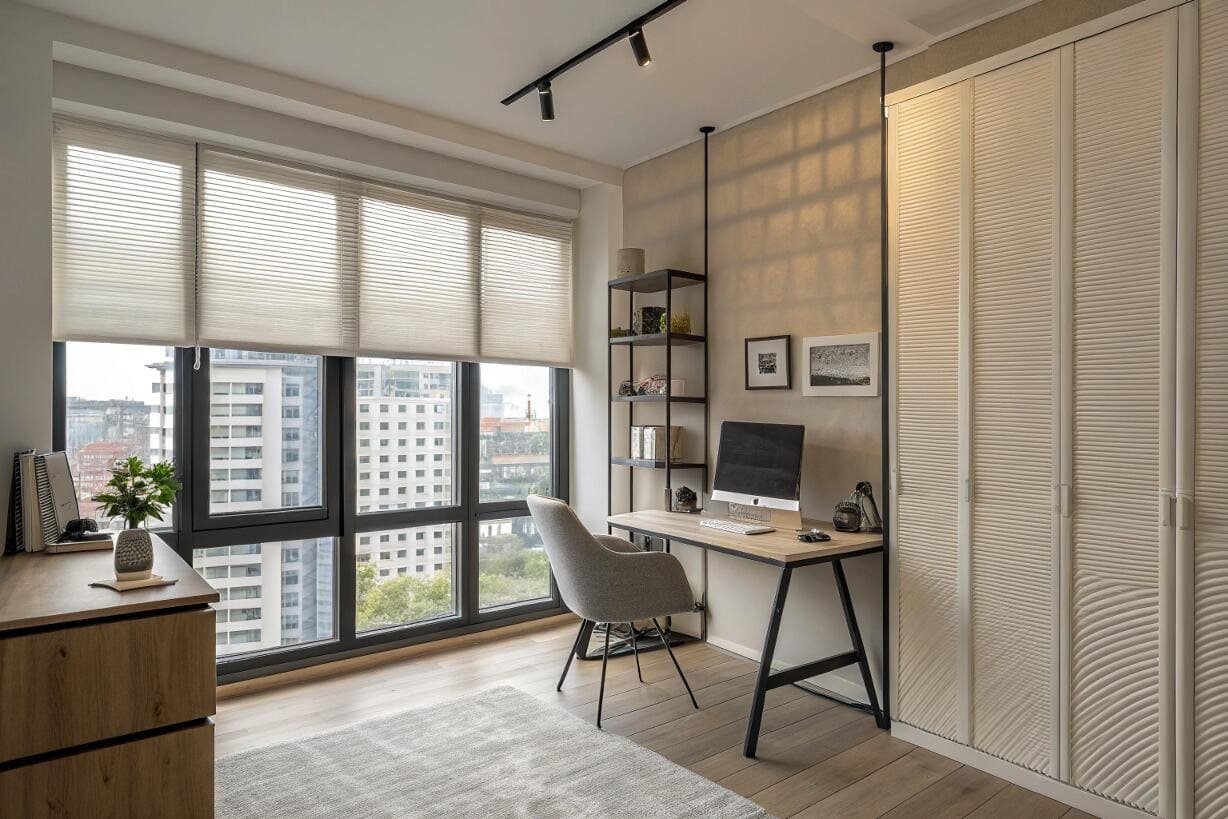
The genius of the honeycomb blind is in its simplicity. The blind is made from a continuous piece of pleated fabric, usually a spun-lace polyester, which is bonded together to form the distinctive honeycomb-shaped cells. When the blind is lowered, these cells open up and trap a layer of air. This trapped air acts as an insulator, much like a double-paned window does.
There are a few key variations in their construction that impact performance:
Key Construction Details
| Feature | Description | Impact on Performance |
|---|---|---|
| Cell Type | Can be a single layer of cells (single cell) or two layers (double cell). | Double cells trap more air, offering significantly better insulation. |
| Pleat Size | The width of the individual pleats, commonly 3/8", 1/2", or 3/4". | Larger pleats are often used for larger windows for visual balance. |
| Fabric | Typically non-woven polyester, available in light-filtering or blackout options. | Blackout fabrics have an inner lining that boosts insulation. |
In my experience supplying blinds for projects in colder climates, clients who choose double-cell honeycomb blinds notice a real difference in their heating costs and overall room comfort during winter.
What is the purpose of a honeycomb blind?
You need your window treatments to do more than just provide privacy. Standard blinds can feel limited in their functionality. Honeycomb blinds deliver a multi-purpose solution perfect for modern buildings.
The primary purpose of a honeycomb blind is to provide superior insulation and improve energy efficiency. They also offer excellent light control, UV protection for interiors, increased privacy, and significant sound absorption[^3], making them a very functional and versatile window treatment.

When I talk with interior designers and contractors, they are often looking for a single product that can solve multiple problems. Honeycomb blinds are fantastic for this because they serve several key purposes at once, adding significant value to a space.
Energy Management
This is their number-one job. By creating a thermal barrier[^4], they help maintain a stable indoor temperature. This reduces the load on HVAC systems, which directly leads to lower energy bills. For any project focused on sustainability or cost-efficiency, honeycomb blinds are a top contender.
Light and Privacy Control
The variety of fabric options allows for precise control.
- Light-filtering fabrics offer privacy while bathing the room in a soft, diffused light.
- Blackout fabrics block nearly 100% of light, which is ideal for bedrooms, media rooms, or conference rooms requiring presentations.
- The Top-Down/Bottom-Up[^5] lift system is a feature I always recommend. It lets you lower the shade from the top to let in light while keeping the bottom covered for privacy.
Acoustic Comfort
The same air pockets that block heat also dampen sound. This is a huge, often overlooked benefit. In urban apartments or offices facing busy streets, honeycomb blinds can make the interior noticeably quieter and more peaceful.
Are honeycomb blinds any good?
Choosing the right blind for a big project can be a tough decision. You worry about making a bad investment that won’t meet your client’s needs. Honeycomb blinds are an excellent choice for many reasons, offering great value and performance.
Yes, honeycomb blinds are very good. They offer an unmatched combination of energy efficiency, light control, and sound reduction. Their sleek, modern look fits many design styles, and their versatility makes them a top choice for both homeowners and commercial project specifiers.
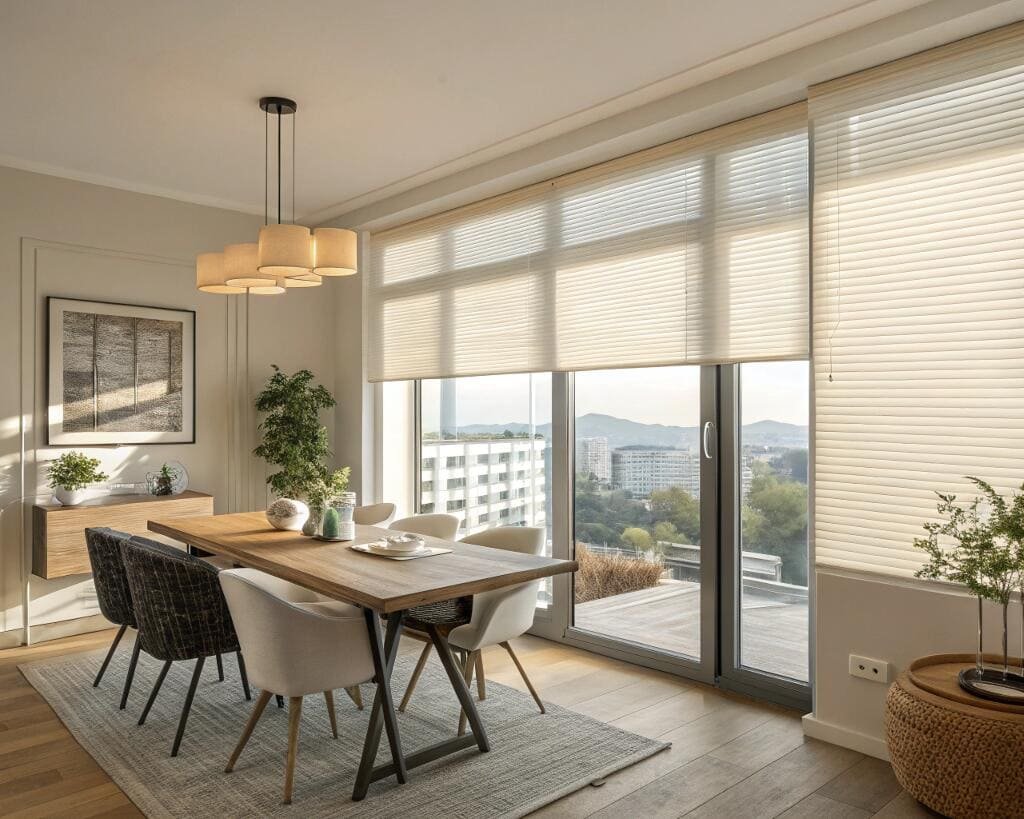
I’ve seen these blinds succeed in a huge range of applications, from high-end homes to large commercial buildings. Their popularity comes down to a strong balance of features. Of course, no product is perfect for every single situation. To help my clients make an informed choice, I always break down the pros and cons honestly.
Key Advantages
The biggest "pro" is their insulation performance, which leads to real energy savings. Aesthetically, their crisp pleats and minimalist profile look clean and modern, disappearing neatly into the headrail when raised. The sound absorption is a significant bonus that improves the quality of any indoor space. For projects involving children, cordless and motorized options also offer enhanced safety and convenience.
Potential Considerations
On the other hand, the main drawback is the lack of view-through when they are closed. Unlike a venetian blind, you can’t tilt them open for a view. Cleaning can also be more involved, as dust can settle inside the cells over time. However, for most projects, the benefits far outweigh these considerations.
| Pros | Cons |
|---|---|
| Excellent Energy Insulation | No view-through when closed |
| Significant Sound Absorption | Cells can collect dust and debris |
| Clean, Modern Aesthetics | Fabric can be delicate |
| Excellent Light Control & Privacy | Not ideal for very humid rooms |
| Cordless & Motorized Options |
How do honeycomb blinds provide superior energy efficiency with R-ratings[^6] up to 3.7?
Energy costs are always a concern for building owners. Windows are a known weak point, essentially leaking money every day. Honeycomb blinds provide a scientifically proven method to insulate windows and cut those costs.
Honeycomb blinds achieve high R-ratings by trapping air in their cellular pockets. Double-cell designs trap more air than single-cell versions, creating a stronger thermal barrier. This structure can achieve an R-rating up to 3.7, significantly reducing heat loss in winter.
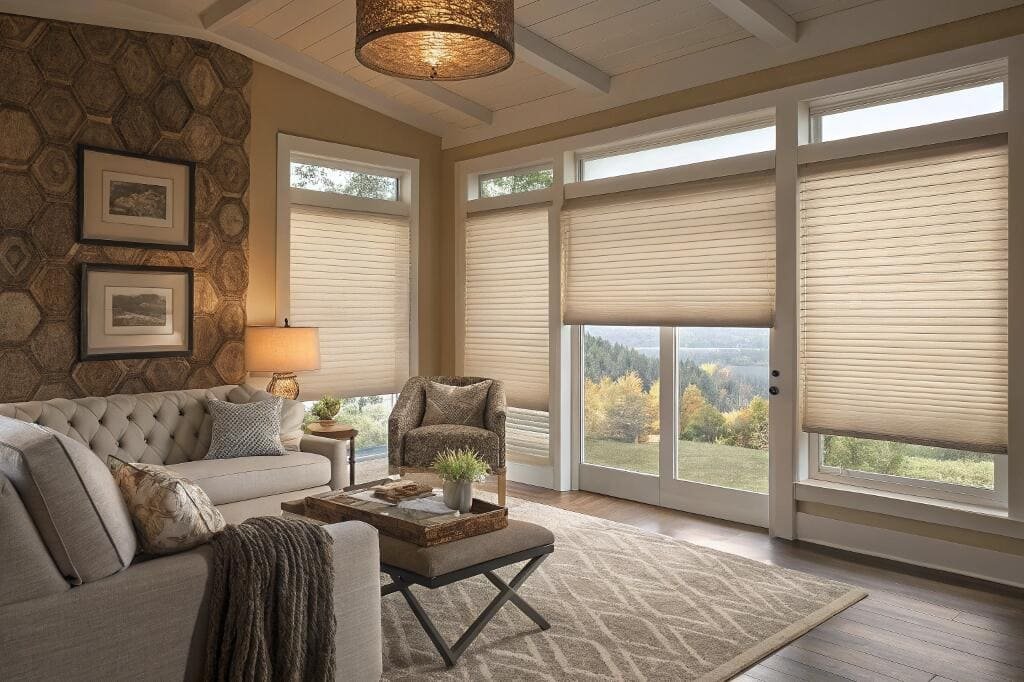
To understand their efficiency, we need to talk about R-value. R-value measures a material’s resistance to heat flow. The higher the R-value, the better the insulation. When I provide technical sheets for a project, the R-value is one of the most important specs.
Understanding R-Value in Window Treatments
A standard single-pane window has an R-value of about 0.9. A double-pane window is better, around 2.0. Adding a high-performance, double-cell blackout honeycomb blind can add up to 3.7 to that R-value. This dramatically reduces the amount of heat that escapes in the winter and the amount of heat that enters in the summer. This isn’t just a marketing claim; it’s a measurable improvement in thermal performance that pays for itself over time.
Factors Affecting R-Value
| Factor | Lower R-Value | Higher R-Value |
|---|---|---|
| Cell Structure | Single Cell | Double Cell |
| Fabric Opacity | Light-filtering | Blackout (with internal foil layer) |
| Fit | Gaps at the sides of the window | A snug fit with minimal gaps |
For projects where energy efficiency is the top priority, I always recommend a double-cell blackout honeycomb blind. It provides the highest level of insulation possible in this product category.
What sound absorption and noise reduction benefits do honeycomb blinds offer?
Outside noise from traffic, construction, or neighbors can disrupt peace and focus. Thin windows and basic blinds do very little to help. Honeycomb blinds can significantly quiet an interior space.
The cellular structure that insulates against temperature also absorbs sound waves. The air pockets disrupt and dampen sound vibrations from outside, reducing echo and noise levels. This makes rooms quieter and more comfortable, especially in busy urban areas or offices.
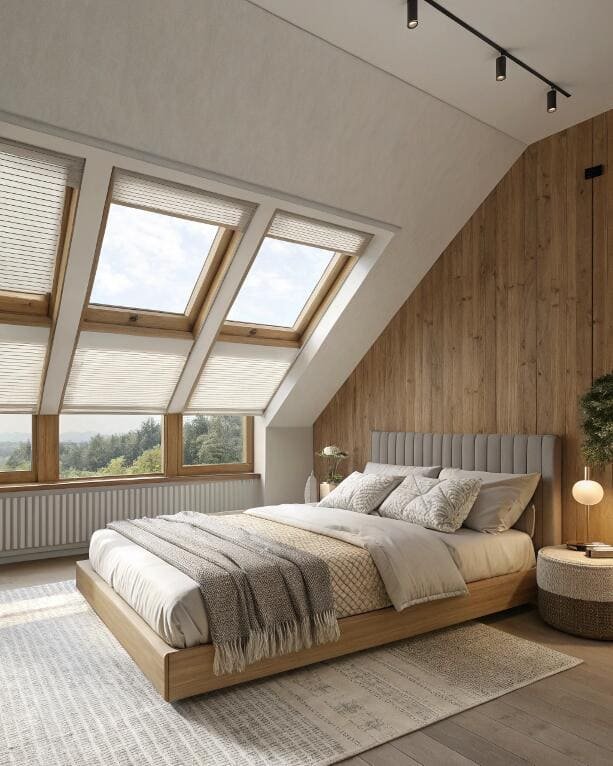
The acoustic performance of honeycomb blinds is a benefit that often surprises my clients. The science behind it is straightforward. Hard, flat surfaces like glass or drywall reflect sound waves, which can create echo and make a room feel noisy. The soft, multi-layered fabric and air-filled cells of a honeycomb blind do the opposite: they absorb sound waves.
How Cellular Structure Dampens Sound
Each cell acts as a mini sound trap. When sound waves hit the blind, they are broken up and absorbed by the fabric and the air pockets. This process, known as sound dampening, reduces the amount of sound energy that passes through the window into the room. It also reduces reverberation (echo) within the room itself, improving the space’s overall acoustics.
Ideal Applications for Noise Reduction
This feature is incredibly valuable in specific environments. I’ve supplied honeycomb blinds for many projects where noise was a major concern:
- Urban residential projects: To deafen the constant hum of city traffic.
- Home offices: To create a quieter, more focused work environment.
- Bedrooms: To ensure a more restful sleep, free from outside disturbances.
- Media or conference rooms: To improve sound quality within the room by reducing echo.
What are the disadvantages of honeycomb shades?
Every product has its limitations, and it’s important to know them before specifying for a project. You need to understand the potential downsides to avoid future issues. Let’s openly discuss them.
The main disadvantages include limited outdoor visibility when closed, as you can’t tilt them like venetian blinds. The cells can also collect dust and insects, making them harder to clean than flat blinds. Their durability in high-traffic areas is also a consideration.
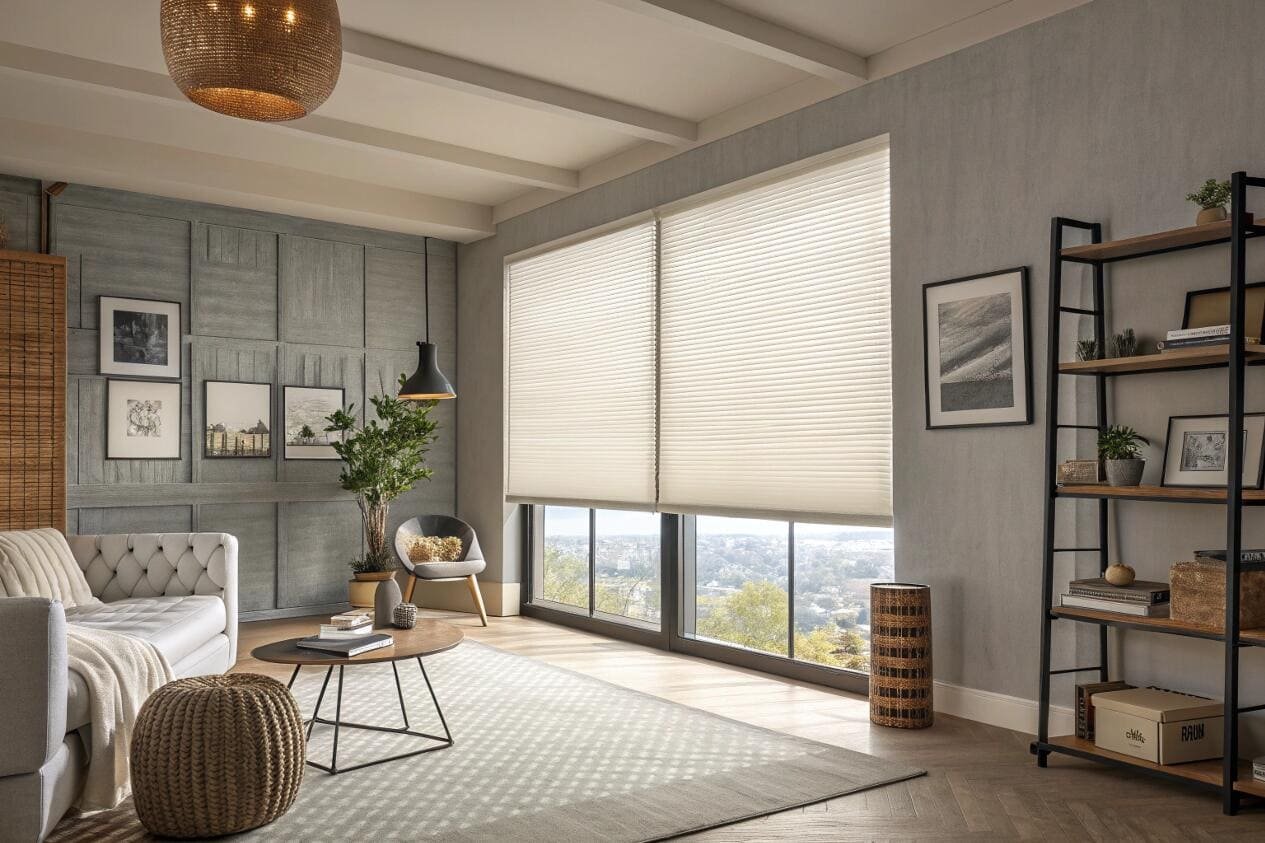
Being transparent about a product’s drawbacks is key to building trust as a supplier. I want my project partners to have all the facts. While honeycomb blinds are an amazing solution, here are the main areas where they have trade-offs.
Cleaning and Maintenance
This is the most common concern I hear. The horizontal cells are open and can collect dust, debris, and occasionally small insects. This can be more of an issue than with a simple roller blind or a vertical blind that can be wiped down. Regular, light maintenance with a vacuum brush attachment or a can of compressed air is the best way to keep them clean.
View-Through Limitations
I’ll cover this in more detail next, but the basic issue is that you can’t have insulation and a view at the same time. The blind is either up (full view, no insulation) or down (full insulation, no view). This is a fundamental difference from slatted blinds.
Durability Concerns
The spun-lace polyester fabric is strong but not indestructible. In very high-traffic areas or commercial environments where they might be handled roughly, they can be more susceptible to creasing, fraying, or damage than a more robust aluminum venetian blind.
How do honeycomb blinds limit outdoor visibility compared to venetian blinds?
You want the powerful insulation of a honeycomb blind, but you don’t want to feel completely cut off from the outdoors. This can feel like an all-or-nothing choice. It’s important to understand the visibility trade-offs.
Unlike venetian blinds with adjustable slats, honeycomb blinds are a solid fabric sheet. When lowered, they block the view completely. To see outside, you must raise the entire shade, sacrificing privacy and light control. This is a key difference in functionality.
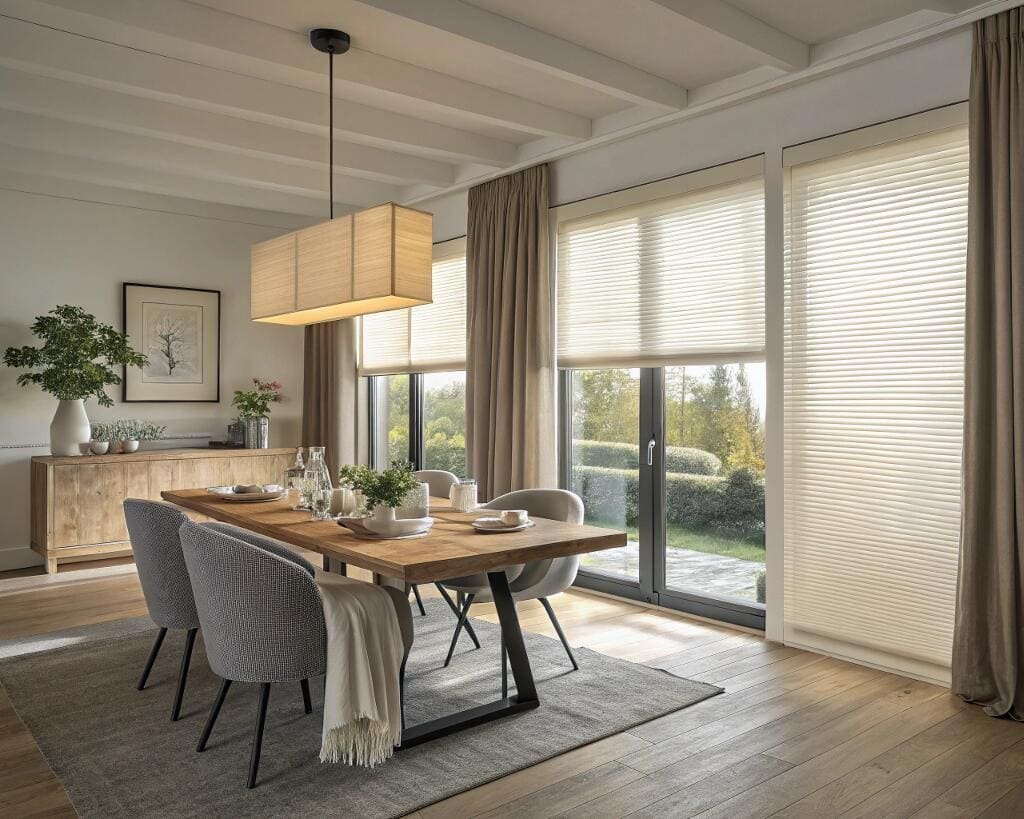
This is probably the biggest functional difference and a key deciding factor for many projects. With venetian blinds, you can tilt the slats to precisely control your view and the light coming in. With honeycomb shades, the operation is different.
The "All or Nothing" Principle
A standard honeycomb blind operates on what I call the "all or nothing" principle. When the shade is down, you get 100% of its benefits: insulation, privacy, and light-filtering. But you get 0% view. When it’s raised, you get 100% view, but you lose all the benefits of the shade.
Solutions for A Better View
Fortunately, we have excellent lift system options to overcome this.
- Top-Down/Bottom-Up: This is the most popular solution. It allows the blind to be operated from both the top and the bottom. You can lower the top of the shade to let in light and see the sky, while keeping the bottom portion raised for privacy. I recommend this for almost all residential projects.
- Day & Night Blinds: This system combines two different fabrics in one unit—usually a sheer or light-filtering fabric for daytime use and a blackout fabric for nighttime privacy and insulation.
| Feature | Honeycomb Blinds (Standard) | Venetian Blinds |
|---|---|---|
| View Control | Up for view, down for no view | Tilt slats for adjustable view |
| Insulation | Excellent | Poor to fair |
| Privacy | Excellent (when closed) | Good (when tilted closed) |
| Aesthetics | Soft, modern, minimalist | Classic, structured lines |
What is the life expectancy of honeycomb blinds?
You’re making a significant investment when outfitting a whole project with new window treatments. You need to know that the products will last. Let’s look at the typical lifespan of quality honeycomb blinds.
With proper care, high-quality honeycomb blinds can last 7-10 years, and sometimes even longer. Lifespan depends on the quality of the fabric and mechanisms, frequency of use, and environmental factors like direct sun exposure and humidity.
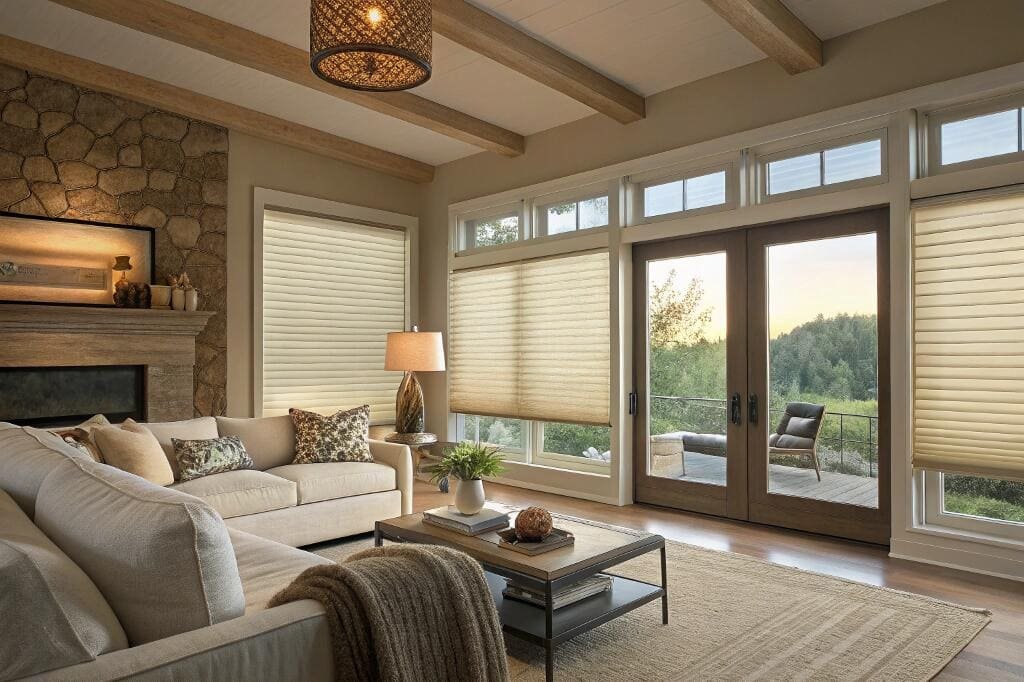
As a supplier, I stand by the durability of our products, and it’s important for project specifiers to know what to expect. A well-made honeycomb blind is a durable product. I have seen them last well over a decade in the right conditions.
Factors Influencing Longevity
Not all honeycomb blinds are created equal. Several factors determine how long they will look and function well.
- Material Quality: This is critical. We use high-grade, resilient polyester fabric that resists fading and sagging. The quality of the internal cords and headrail mechanisms is just as important. Cheaper blinds often fail here first.
- Usage: A blind in a rarely used guest room will last longer than one in a busy family room that is raised and lowered multiple times a day. Motorization can actually extend the lifespan by ensuring smooth, even operation every time.
- Environment: Intense, direct sunlight over many years can eventually cause any fabric to become brittle. In extremely humid areas, there are other considerations as well.
Signs of Wear
After many years of service, you might notice signs that it’s time for a replacement. These include frayed fabric edges, cells that have started to sag or lose their crisp pleats, or a lift mechanism that becomes difficult to operate.
Do honeycomb blinds get moldy?
Humidity is a major challenge in some environments, especially bathrooms and kitchens. Mold is not only unsightly but also a health hazard. It’s smart to understand the risk with honeycomb blinds and how to prevent it.
Honeycomb blinds are not inherently prone to mold, but they can develop it in consistently damp, poorly ventilated areas. The fabric cells can trap moisture and dust, so choosing the right material and ensuring good airflow is very important.
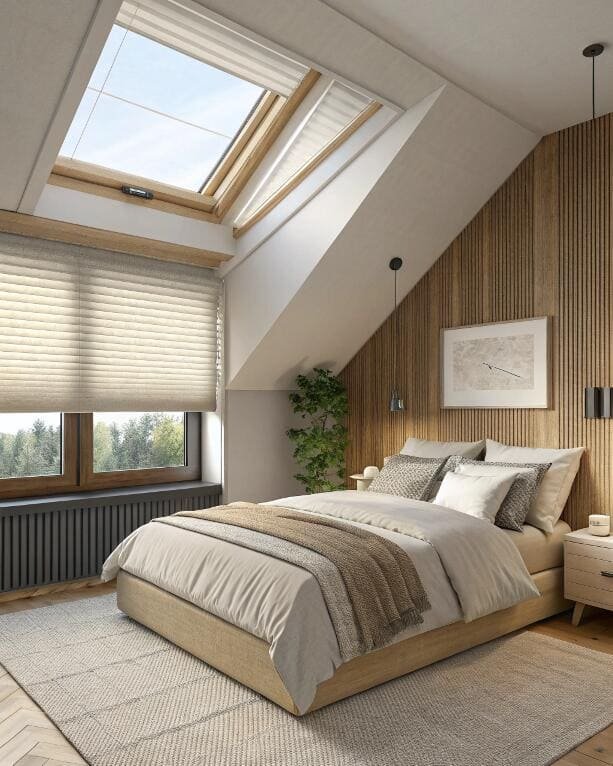
I get asked this question frequently by contractors planning bathroom or kitchen renovations. The honest answer is that any fabric product can develop mold if it’s kept in a dark, damp, unventilated space. Honeycomb blinds are no different.
Why Mold Can Be a Concern
The potential issue is with the cells themselves. If condensation from a window gets the fabric damp, and that moisture gets trapped inside the cell with some dust (which can act as a food source for mold), it creates a potential breeding ground. This is most likely to happen if the blind is left down and pressed against a window that gets heavy condensation.
Prevention is Key
The good news is that preventing mold is very straightforward.
- Ventilation: This is the most important step. In bathrooms, always use an exhaust fan during and after a shower. In kitchens, use a range hood. Keeping the air moving prevents moisture from settling.
- Material Choice: For high-humidity areas, I guide clients toward our lines that use moisture-resistant polyester fabrics. While not fully waterproof, they absorb less moisture and dry faster than standard fabrics.
- Proper Use: I advise clients to regularly raise the blinds completely. This allows the fabric to air out and release any trapped moisture. It’s a simple habit that makes a big difference.
Can you see through honeycomb blinds at night?
Privacy is a primary function of any window covering, especially at night. The fear of shadows or silhouettes being visible from the outside is a common concern. You need to choose the correct honeycomb fabric to guarantee nighttime privacy.
It depends entirely on the fabric’s opacity. Light-filtering honeycomb blinds will show shadows and silhouettes from inside when it’s dark outside and your lights are on. For complete privacy, you must choose a blackout honeycomb blind.
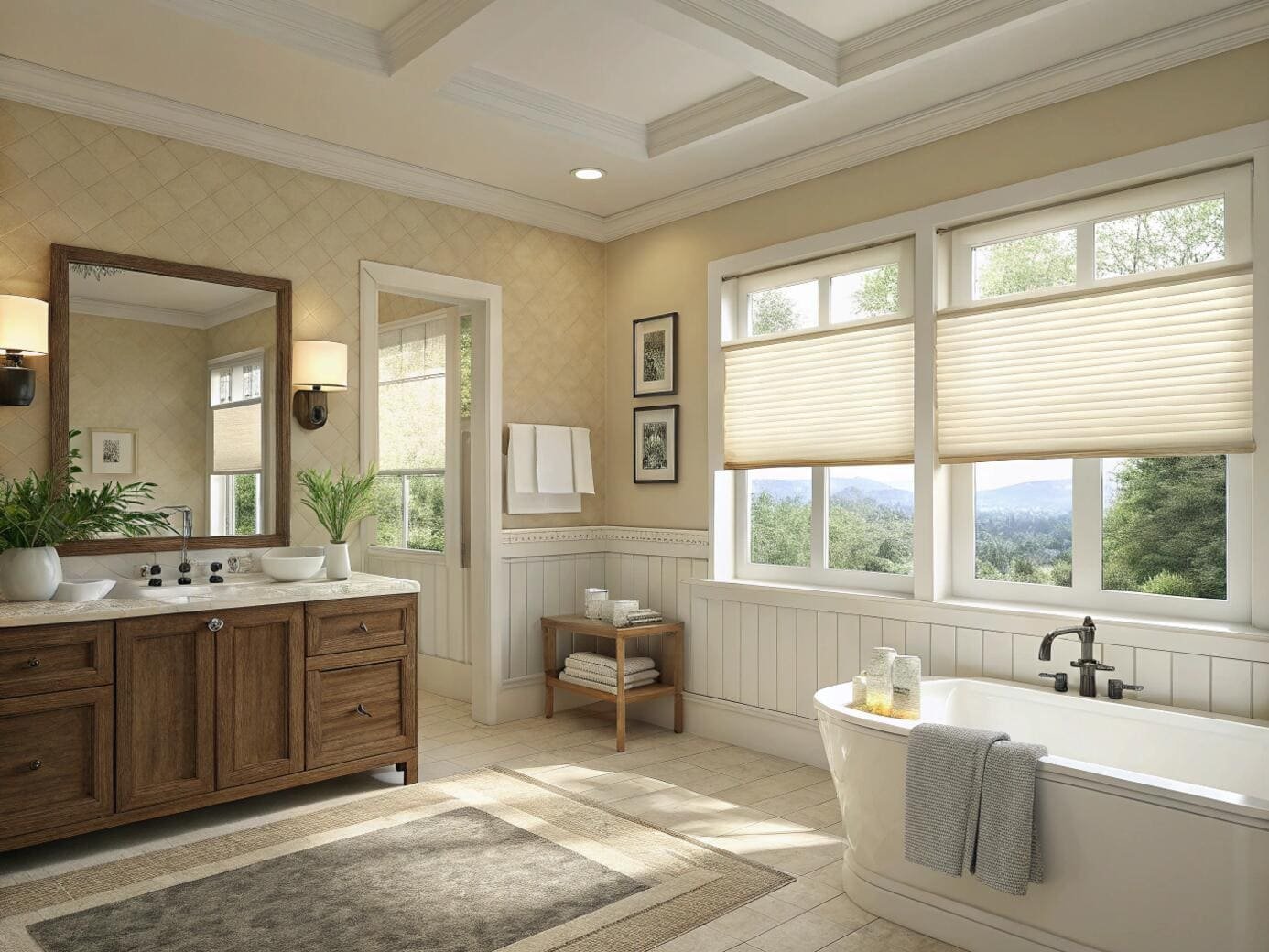
This is a critical detail to get right, especially for residential projects. The performance of the blind at night is determined by one thing: the type of fabric used. The difference between light-filtering and blackout is huge.
The "Shadow Puppet" Effect
With light-filtering fabrics, when you have lights on inside your room and it’s dark outside, the blind will glow softly. People outside will not be able to see details, but they will clearly see shapes and movement inside. I call this the "shadow puppet" effect. This is fine for living areas where ambient light is desired, but it is not suitable for bedrooms or bathrooms where total privacy is essential.
Blackout for Total Privacy
For situations demanding 100% privacy, the only choice is a blackout honeycomb fabric. These shades are constructed with an inner lining, often made of mylar or a similar foil material. This lining does two things: it completely blocks any light from passing through, and it makes the blind totally opaque. No light, no shadows, no silhouettes.
| Feature | Light-Filtering Fabric | Blackout Fabric |
|---|---|---|
| Privacy at Night | Poor (shows silhouettes) | Excellent (100% opaque) |
| Light Control (Day) | Diffuses light, reduces glare | Blocks all light |
| Ambiance | Soft, gentle glow | Total darkness |
| Energy Efficiency | Good | Excellent (lining adds insulation) |
Conclusion
Honeycomb blinds are a top choice for insulation, noise reduction, and modern style. They offer huge value but require you to consider the trade-offs in visibility and cleaning for your project.
---
[^1]: Understand the science behind insulation in window treatments and its benefits.
[^2]: Explore the unique advantages of honeycomb blinds, including energy efficiency and sound absorption.
[^3]: Explore how certain window treatments can significantly reduce noise levels.
[^4]: Learn about thermal barriers and their role in energy efficiency.
[^5]: Learn how this innovative lift system enhances light and privacy control.
[^6]: Understand R-ratings and their significance in evaluating insulation performance.Partner with VelaBlinds for Your Next Project
Smart window treatments shouldn’t be complicated. After working with 500+ distributors and contractors worldwide, I’ve streamlined the process to get you quality products, competitive pricing, and reliable support – every time.
Why project professionals choose VelaBlinds:
- ✅ Fast, Accurate Quotes – Detailed specs and pricing within 24 hours
- ✅ Transparent Pricing – No hidden fees, volume discounts clearly outlined
- ✅ Quality Assurance – Direct partnerships with certified OEM manufacturers
- ✅ Project Support – Dedicated account manager from quote to delivery
Start your next project:
📧 Quick Quote: Send your requirements to info@velablinds.com
📱 Direct Contact: WhatsApp +86 137 2012 8317
🌐 Browse Solutions: https://velablinds.com/
📁 Product Resources: Access spec sheets, catalogs & project files
Jimmy Chen, Founder
"I built VelaBlinds to solve the real challenges I faced as a project buyer – long lead times, unclear specs, and unreliable suppliers. Let’s discuss how we can power your projects with smarter blinds."
Serving distributors and contractors across North America, Europe, and Australia since 2018.





